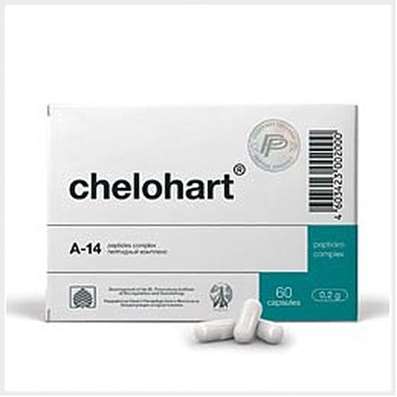The central dogma of molecular biology
28 Nov 2016
Biophysicist Dr. Doping tells about transcription of the nucleotides in the amino acid retroviruses and Kuru disease. How is the transfer of information in a cell from nucleic acids to proteins? Are there contradictions of the central dogma of molecular biology, formulated by Francis Crick? Why prions are able to without the participation of DNA and RNA to cause disease?
In the first years after the discovery of the double helix, when there is a new science - molecular biology, the study of the molecular nature of life - a recognized leader among molecular biologists Francis Crick was that along with James Watson discovered the double helix in 1953. In the late 50s, he formulated the rules of how the molecular machine life, which are called (he gave it the name) of the central dogma of molecular biology.
By that time, something that has been known, but still very little detail, except the double helix. And the double helix at the time was still a hypothesis, it has not yet been generally recognized, and the Nobel prize has not yet been issued - it was received by Watson and Crick in 1962. And we are talking about the end of the 50s, more precisely - about the year 1958, when Crick formulated the central dogma.
Vitamin B12 (Cyanocobalamin injection) - is extremely essential for DNA synthesis.
It consists in that the cage has a directional flow of information from DNA, which is a genetic source text composed of the four characters: A, T, G and C. This text is written as a sequence of letters, which are called nucleotides in double helix DNA in one of two circuits. This text is transcribed. The process is called transcription. RNA is synthesized, which is identical to the text, with the difference that in RNA instead of T is the U, but they are very similar, and RNA text is a replica of the corresponding DNA text.
This RNA, which is called a messenger RNA or mRNA is translated using the genetic code to a sequence of amino acid residues in proteins - translation of the nucleic acids DNA and RNA from the four-letter text 20 alpha-amino acids text. Canonical amino acids, or natural amino acids, - 20, and the letters in the text of nucleic acids - 4, so that it is converted from four-letter alphabet of 20-alpha using the genetic code, wherein each triplet of nucleotides responsible any amino acid. Total can be made from a combination of 64 letters 4 by 3 letters, and 20 amino acids, so the code had to be degenerate, and while it was not yet known, it has not even begun to decipher when Crick formulated the central dogma. But confidence that there should be a code has already been, and had already been shown to be a triplet that is three letters in the nucleic acids responsible one amino acid. These three letters correspond to the amino acid are called codons. These codons 64 and 20 amino acids they encode. Thus, each amino acid - almost everyone - is responsible for several codons. Any amino acids which correspond to the codon is only one, but usually more than one.
Thus, the central dogma - it is postulated that in a living cell there is a directed flow of information: DNA - RNA - protein. Creek emphasized that its central dogma - is not positive and one negative statement, and the main content of the central dogma is that there is no reverse flow of information, the protein can not change the genetic information.
This is the basic meaning of the central dogma: the protein is not able to change the information in RNA or DNA, the flow is in one direction.
Many years later, after it was formulated, - more than 10 years - it opened a new enzyme that was not known at the time of formulation of the central dogma - the so-called reverse transcriptase. Hence, the process of transcription - a synthesis of RNA to DNA, has been included in the central dogma. And the translation process - the synthesis of protein by RNA instructions. And the replication process: DNA can be synthesized on a DNA, RNA can be synthesized on the DNA and protein is synthesized RNA according to the instructions.
However, the enzyme that synthesizes the RNA to DNA was opened. It was discovered in those viruses in which the RNA is the genetic information, the genetic information encoded in these viruses not in DNA and RNA. Such viruses are called retroviruses, and, by the way, is now one of the most famous viruses - the human immunodeficiency virus, HIV, responsible for AIDS, for AIDS, - belongs to the category of retroviruses. It genetic information is recorded in the form of RNA molecules, rather than DNA.
This virus, like all retroviruses, carries in its viral capsule, where it is hidden genetic RNA special enzyme called reverse transcriptase, which is the first that does when that RNA enters the cell, - synthesizes DNA of viral RNA which then serves as usually DNA, genetic material for further development of the virus within the cell.
This discovery caused a great shock among molecular biologists, because until then it was believed that, according to the central dogma, this can not be. But Crick said (he wrote a special article in 1970) that he never said that this can not be. It is only said that can never be the flow of information from the protein nucleic acids and nucleic acids in all processes possible: synthesis of DNA may be DNA, RNA-DNA, DNA-RNA and RNA-RNA. So that the central dogma passed that test - Crick explained the situation - and has remained the cornerstone of molecular biology.
But there is one phenomenon in biology and medicine, which is a very long time, actually still causes great confusion in the minds of molecular biologists. This phenomenon is called prions. There are diseases, very rare, are not caused by viruses (of the bacteria of the question), in which, as we know, the genetic information incorporated in the form of RNA or DNA, in the form of nucleic acids. These diseases belong to a mysterious disease Kuru, which suffer from the Papuans of New Guinea. As stated, this is due to cannibalism and ritual, when they eat the brains of their dead relatives. As it turned out, in this process there is a transfer of an infectious origin. And as it turned out, this is the beginning of an infectious protein, there is no nucleic acid.
This does not contradict the central dogma, but it is a significant problem for the central dogma. Because how is it that the protein is able to do the job without a nucleic acid? It has been found that in fact, the nucleic acid is present in the sense that it is required that a gene within the genome was that produces the normal protein. But when it comes into contact with the patient the protein properly folded in the spatial structure, then the properly folded protein induces abnormal normal protein composition that is produced in the body and thus induces a chain of misfolded proteins.
This is a very special situation. The protein of any nucleic acid which does not transfer its information. But it induces protein misfolding process which leads to the brain disease causing people to die. This is extremely interesting, very long time to make discoveries, for which the two men received the Nobel Prize: Gaydushek received the Nobel Prize, when he showed that the disease does spread by cannibalism, and Stanley B. Prusiner won the Nobel Prize, when he showed that it is indeed a protein that this disease is caused by prions. This is a special thing that, in general, does not contradict the central dogma, but it is extremely interesting as a very unusual way of spreading the disease.

 Cart
Cart





